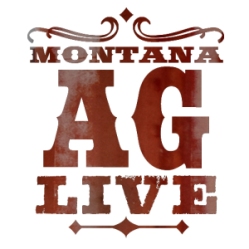Limited Cattle Offerings in Holiday Week – Montana Markets Week Ending May 30
Montana Weekly Auction Summary for Week Ending May 30, 2015
Market: Billings Livestock Commission, Miles City, Public Auction Yards
Receipts: 4,247; Last Week 2,606; Last Year NA
Compared to last week: Feeder cattle were all too lightly tested last week for an accurate market trend, however higher undertones abounded. Feeder cattle were of average to attractive quality this week, with a few consignments of very attractive cattle. Demand for feeder cattle this week was good to very good at times.
CME futures contract prices have gained every day since last Thursday. Starting Tuesday August contracts gained 5.35 to close at 224.95 and September gained 4.725 to close at 223.25 as of Thursday nights close. The 7 day running average CME feeder cattle index closed at 222.45 as of Wednesday’s sales (the latest available settlement). The CME index has trended higher all week as CME futures prices give support to buyers bidding in sale rings across the 12 state region.
Limited offerings of feeder cattle in recent weeks have buyers worried of the volume of cattle left in the country side and many bid accordingly pushing all feeders higher this week. Of note, some buyers this week were particularly aggressive in purchasing 600-750 lbs heifers and in many cases were willing to pay replacement price or even above replacement price in order to fill feedlot orders.
Weigh-up cows sold with good to very good demand this week on mostly moderate offerings. Slaughter cows sold generally steady to firm on all classes offered this week. Feeding cows sold mostly firm. Weight-up cows are seeing demand from slaughter, replacement, and feeding cow buyers which has yet again pushed all cow prices higher. Packer buyers continue to buy cows to put on feed again this week as many are hoping to help curb shorted summer supplies.
Young aged 2-3 year olds sold sharply higher with many buyers looking for replacement cows to both ship to the southern plains as well as rebreed and fill local pastures. With heavy rainfall at times this week many buyers were very aggressive in bidding as pasture and range conditions are in great shape in and around the Yellowstone river valley. Cow/calf pairs saw much of the same strong demand as many local ranchers were in the stands this week actively bidding. Middle age (solid mouth) and aged (broken mouth) cows sold on the best demand again this week with ranchers searching for short keep cows to run on grass this summer.
Read more from USDA’s May 29 Montana Weekly Auction Summary.
National Feeder & Stocker Cattle Summary – Week Ending May 29, 2015
Receipts This Week: 162,400 Total – 104,000 (Auctions); 36,700 (Direct); 21,700 (Video/Internet)
Compared to last week, a light holiday test of yearlings and calves sold fully steady to 5.00 higher. The official start to the summer grilling season was followed by continued good demand for all classes and in many cases no signs of top-side pressure. Many major early–week auctions were idle this week, but buyers picked up where they left off at mid-week sales, as demand remains very good for calves and yearlings. Calve markets continue to trade on limited supplies with enough localized demand to offset supplies. The best advance continues to be on the heavier yearlings over 800 lbs as demand remains very good on yearlings.
- Auction Receipts: 104,000 Last Week: 168,000 Last Year: 111,800
- Montana 4,200. 78 pct over 600 lbs. 54 pct heifers.
Read more from the USDA’s May 29 National Feeder & Stocker Cattle Summary.
Weekly Montana Hay Report – May 29, 2015
Compared to last week: No changes were seen this week as farmers continue to wait on first cutting. No new contracts have yet to been seen for western dairy hay. Demand for Alfalfa hay is light on very light supplies. Many parts of central Montana received between 1.0 to 3.0 inches of additional rain this week which helped improve both pasture and range conditions as well as hay crop conditions.
Many ranchers in the Central and Eastern parts of the state have turned cattle out for the summer which has further lightened demand for grass hay. Ranchers buying hay to stock has slowed to a near halt with rain curbing drought concerns. Light demand was seen for grass hay marketed within the state, however steady prices continue to move light supplies. Good demand was seen for hay to ship to other areas of the country, particularly drier regions, both east and west.
- Alfalfa
- Supreme: Small squares, 200.00
- Premium: Large squares, 150.00-155.00
- Good: Large squares, 120.00
- Small squares, 138.00-150.00
- Fair: Large squares, 90.00-130.00
- Grass:
- Good: Large Rounds, 90.00-100.00;
- New crop contract, 110.00-120.00; Large Squares, 100.00
- Timothy Grass:
- Premium: Small Squares, 240.00.
- Good: Small Squares, 160.00-180.00.
- Straw:
- Large Squares and Rounds, 35.00-40.00.



